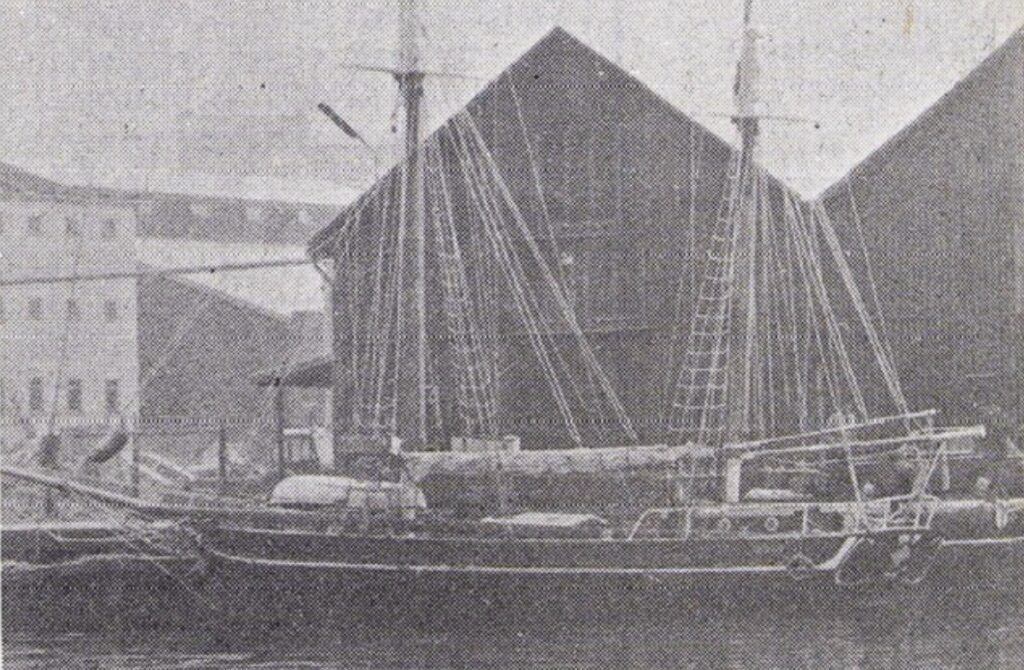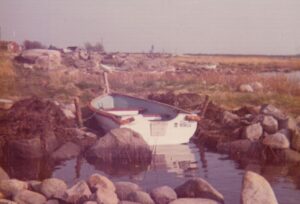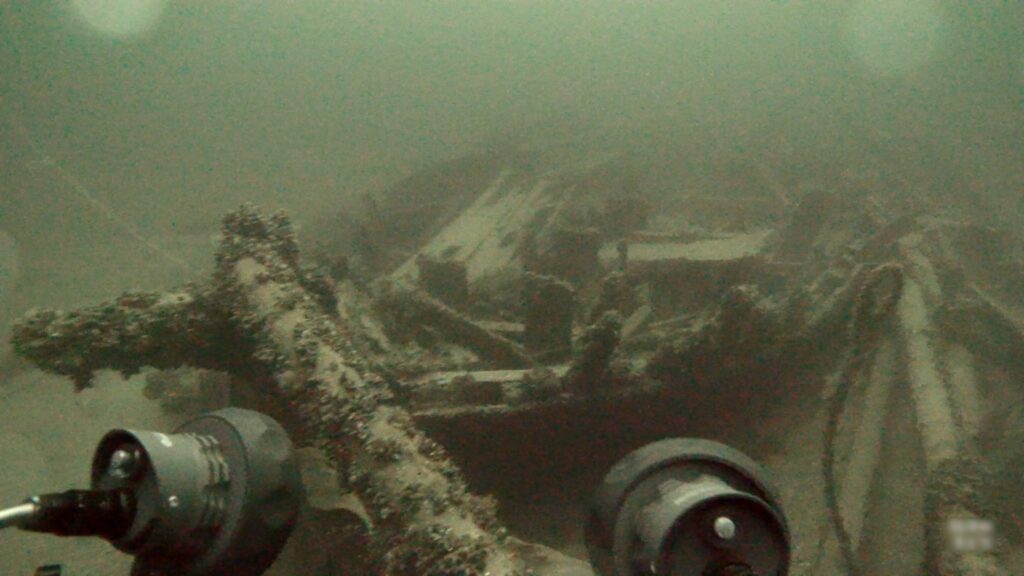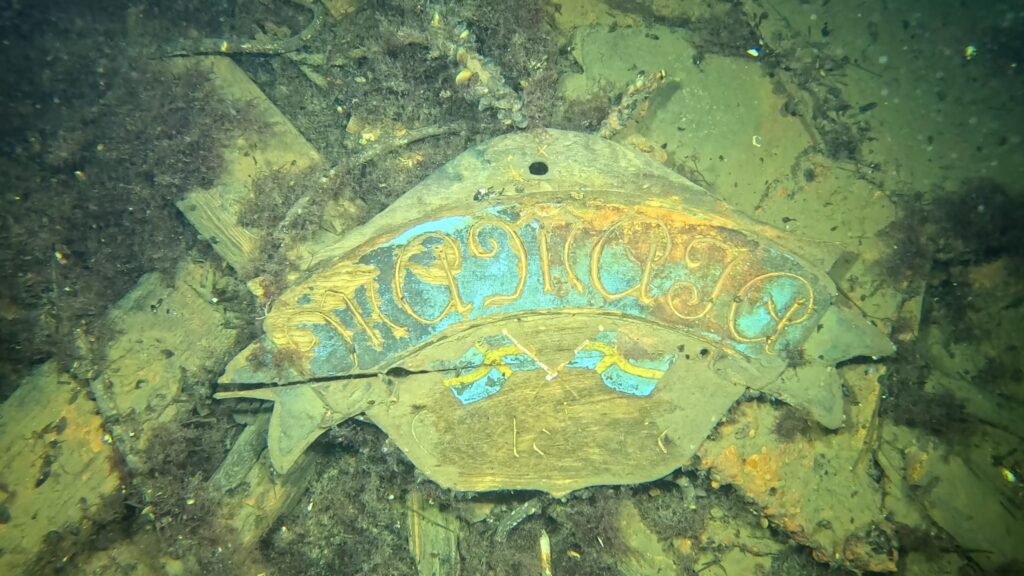
Mamaia
In 1972, Santu Mariposa, a 25-year-old music engineer from a record company in Topanga Canyon, California, was on a mission to find a schooner and to convert into a mobile recording studio. After searching in vain across the USA, he traveled to Northern Europe, where he visited essentially every port in search of the perfect vessel. According to some reports, there were also plans to use the boat as a pleasure yacht in the Caribbean – something that may have been intended to be combined with the studio. In Västervik, he finally found what he was looking for: a motor schooner named Mamaia. The ship, which is believed to have been built in Denmark in the late 1800s, had previously operated the route Copenhagen–Faroe Islands for the Danish Postal Service. She was 17 meters long, with a deadweight of about 30 tons, and had previously borne the name Vanina. After several Danish and Swedish owners, the ship had lastly been used as a cargo ship around Öland. When Santu bought her, she was in poor condition, but he acquired the vessel for 55,000 SEK.
According to reports, Santu was forced to wait three months in Kalmar to get an exit permit from the Swedish Maritime Administration and time to gather a crew. He brought with him on the journey the captain Per Albrechtsson and the engineer Göran Stjerne, both from Kalmar. The plan was to first sail to Amsterdam for renovation and rigging, then onwards to Portugal, and finally across the Atlantic to the West Indies.
During an inspection in Kalmar, the authorities required that Mamaia be equipped with a lifeboat, as the existing lifeboat was not approved. Therefore, Santu acquired one from Amsterdam – an investment that would later prove to save lives.

The ship left Kalmar the day before Christmas Eve. Already at the border to Blekinge, they had engine problems and went into Kristianopel for repairs. On Christmas Eve morning, they set off again, but at midnight, the night before Christmas Day, they ran aground near Utlängan. Santu was at the helm while the others slept. Despite managing to free themselves, the ship began to take on water. They decided to seek shelter in Karlskrona.
The water intrusion led to the engine, and thus the bilge pump, shutting down. The ship began to sink. For five hours, the crew shot off distress flares and used emergency flares in the dark and cold. Fortunately, they had the recently acquired lifeboat. Around 3 a.m. in the morning, they abandoned Mamaia, which shortly thereafter disappeared beneath the surface, and paddled towards the mainland.

Around 10 o’clock that morning, a neighbor of the fisherman Gösta Karlsson in Stenshamn saw something in the water. He ran to Gösta, who, along with his son Kjell-Uno, rowed out and rescued the three men, who were frozen but alive. They were taken care of and brought to Karlskrona, where they spent the weekend before Santu returned to Amsterdam. Despite what had happened and the fact that the ship was uninsured, Mariposa was determined to return, salvage Mamaia, renovate her, and continue its plan.

Santu returned to Sweden in 1973 to search for the wreck together with a friend, but without results. In 1974 he made another attempt but again without results. He therefore announced a reward of 4,000 SEK for anyone who could locate Mamaia. Posters were put up in Karlskrona and surrounding towns with information about the ship, its presumed location, and the reward. He also suggested dragging, as two sails were set at the time of the sinking and the rigging contained hundreds of lines.

Santu Mariposas’ persistent attempts to locate the wreck, combined with his connection to Amsterdam, gave rise to rumors that Mamaia had transported drugs or diamonds. During the over 50 years that have passed since the sinking, many divers have tried to find the wreck, but Mamaia has remained completely missing until now when we found it.

In mid-March 2025, while we were out searching for the wreck, a potentially interesting structure was identified on the seabed. The initial images were unclear. The ship lies at a depth of between 30 and 40 meters and is heavily wrecked, making it difficult to detect on sonar images. After analyzing and discussing the overview images, we decided to return to the site for a more thorough sonar investigation. This was done, and we were then able to see that the object deserved a closer look. It was time to make a dive at the site.
When we reached the wreck, we initially thought it could be a significantly older wreck, as much of the structure had collapsed. However, it gradually became increasingly clear that it was a more modern ship as electrical installations were observed, the dimensions matched, and the two masts corresponded with what we knew about Mamaia.

When we shortly thereafter saw a sign with winding letters and read: MAMAIA, the matter was clear. The wreck, which had been missing without a trace for over 50 years, was finally located and identified.